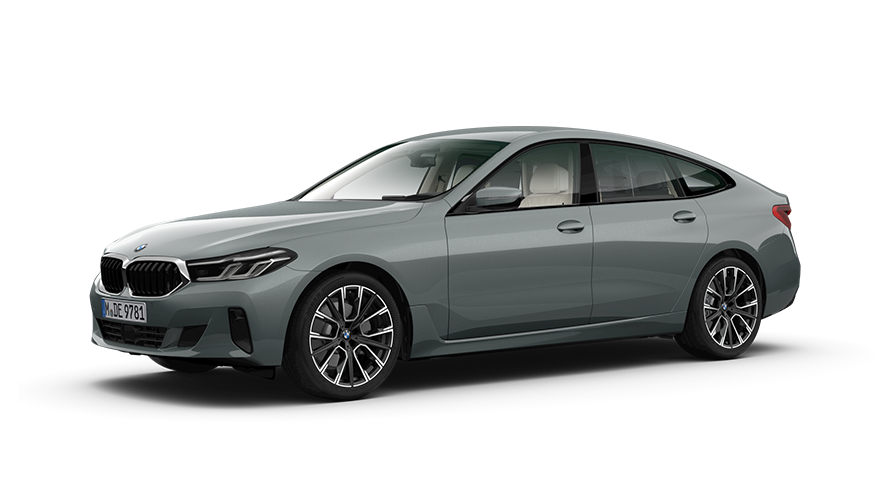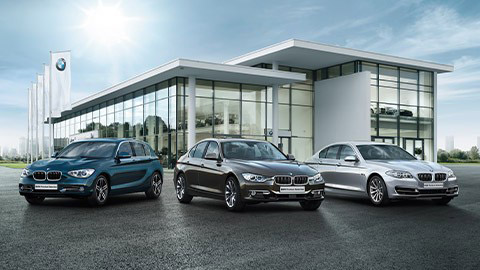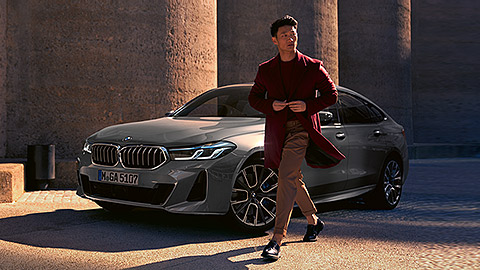Our tool for managing your permission to our use of cookies is temporarily offline. Therefore some functionality is missing.
AN OVERVIEW OF THE BMW 6 SERIES.
The sporty and elegant BMW 6 Series Gran Turismo: An exceptional vehicle characterised by dynamics, aesthetics and exceptional driving comfort.
A grand tradition of timeless fascination: the BMW 6 Series Coupé and the BMW 6 Series Convertible are a unique combination of agile dynamics and exclusive elegance. A promise of performance, an open invitation. The BMW 6 Series Gran Coupé and the BMW 6 Series Gran Turismo continue this philosophy in an intelligent and consistent way.
THE LATEST BMW 6 SERIES.
High-end sports coupés have been an integral part of the BMW DNA for decades. Innovation, progress, and cutting-edge technology allow the symbiotic interaction of sportiness and driving dynamics, travel comfort and luxurious equipment. The BMW 6 series is an esthetically pleasing vehicle whose exclusivity is based on stylish elegance and unrivaled supremacy.
BMW 6 SERIES OVERVIEW.
Since the first BMW 6 series was launched in the mid-1970s, it has represented design, luxury, and technical evolution, just like its predecessors – the large coupés. The new edition of the luxury coupé in the 2000s brings this tradition into the new millennium. The same applies not only to the successor but also the BMW 6 Series Gran Turismo.
4 CHARACTERISTICS OF THE BMW 6 SERIES.
- 01 Esthetically pleasing, powerful appearance
- 02 Outstanding driving dynamics
- 03 Exceptional comfort
- 04 Cutting-edge innovation

A BRIEF HISTORY OF THE BMW 6 SERIES.
Learn more about the history and development of the BMW high-end coupé. Here you can discover the milestones of this esthetically pleasing, sporty vehicle which offers a unique combination of performance, comfort, and exclusivity.
A BRIEF HISTORY OF THE BMW 6 SERIES.
Learn more about the history and development of the BMW high-end coupé. Here you can discover the milestones of this esthetically pleasing, sporty vehicle which offers a unique combination of performance, comfort, and exclusivity.
THE FIRST GENERATION BMW 6 SERIES.
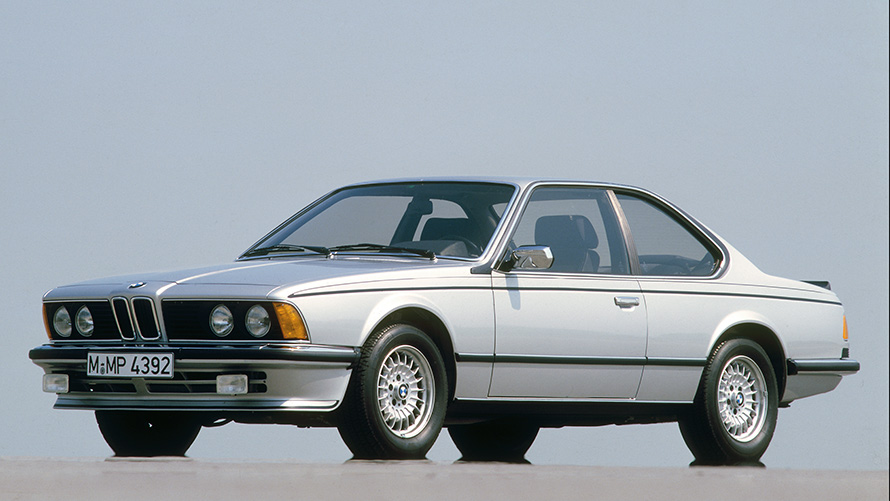
(BMW E24)
With its arrival at dealerships in 1976, the BMW 6 series is one of the fastest four-seat coupés available at the time. During its production run of over 13 years, the car remains at the forefront of technical progress, including intake manifold injection, modern electronics and purifying exhaust fumes using catalytic converters.
The Coupé is designed by the then Chief Designer Paul Bracq. This is why the BMW 6 series has a low belt line allowing for large side windows. The dynamic side line highlights the elegance stemming from clear lines and reduced proportions, while at the same time achieving incomparable dynamics. This image is underlined by the pointed front with the characteristic, raised double kidney.
From 1978 the BMW 635CSi accentuates the vehicle’s sporty character even more – with reinforced stabilizers and more powerful shock absorbers. In 1982 the BMW 6 series is re-engineered. In 1984 the BMW M635CSi appears on German roads and is the highest evolutionary stage of the four-seater sports coupé. Equipped with the BMW M88 engine, which is also used in the BMW M1, a reinforced 5-speed sports transmission, reworked chassis and more powerful braking system deliver the driving pleasure that M models have always had.
In 1987, the second model update ensures the headlights and engines are again state-of-the-art.
Production period: 1976 – 1989
Engines: 2.8 – 3.5 liters (135 – 210 kW, 184 – 286 hp), 6-cylinder
Length/width/height: 4,755 – 4,815 mm/1,725 – 1,740 mm/1,355 – 1,365 mm
THE SECOND GENERATION BMW 6 SERIES.
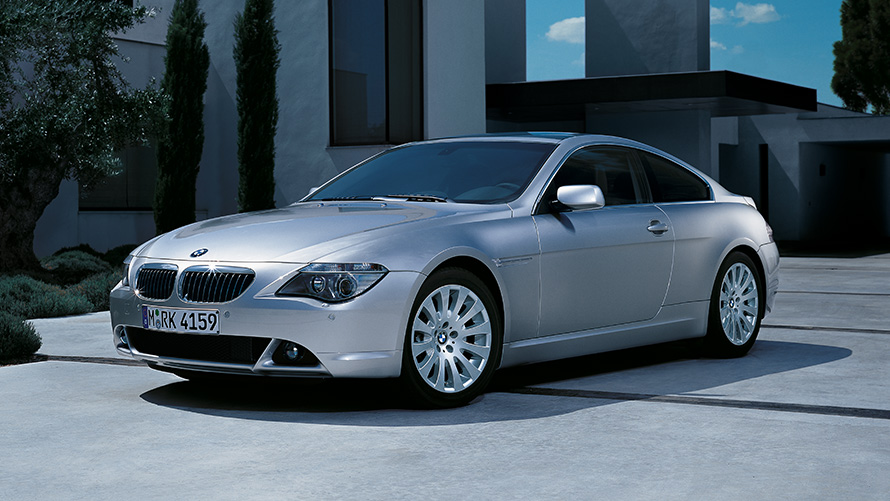
(BMW E63, E64)
The new BMW 6 series edition in 2003 is influenced by the then Chief Designer Chris Bangle. BMW once again creates a synthesis of sportiness and comfort, evident externally in the flowing lines. The elongated proportions and the deep, long, and wide silhouette, combined with a recessed passenger compartment, convey dynamism and self-confidence. With the refined but powerful engines and a consistent lightweight design, the vehicle offers a surprising level of agility. The almost perfect axle load distribution of approximately 50:50 makes a decisive contribution.
At the beginning of 2004, the BMW 6 Series Convertible combines open-air driving pleasure with athletic excellence. Released in the same year, the BMW M6 is equipped with a V10 engine and 373 kW (507 hp). It has a specific output (per liter displacement) comparable to motor sport vehicles.
The 2007 model update features subtle changes to the design which further underline the sporty appearance of the coupé. There are also new things to discover inside – for example, a specific overhaul of the controls. The engines are more efficient. An 8-cylinder engine with a 4.8 liter displacement and 270 kW (367 hp) now powers the BMW 650i Coupé and BMW 650i Convertible.
Production period: 2003 – 2010
Engines: 3.0 – 5.0 liters (190 – 373 kW, 258 – 507 hp), 6-, 8- & 10-cylinder
Length/width/height: 4,820 mm/1,855 mm/1, 374 mm
THE THIRD GENERATION BMW 6 SERIES.
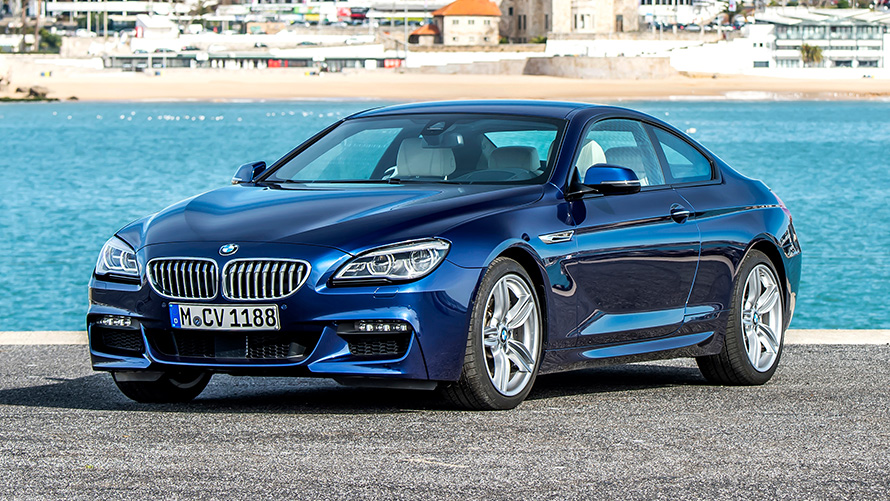
(BMW F06, F12, F13)
The next generation of the BMW 6 series once again combines exceptional travel comfort and esthetics with outstanding performance. The interplay of the clear lines is reminiscent of waves crashing on the bow of a motorboat. Together with its broad width, flat silhouette and extended shape, the result is a combination of stylish elegance and powerful dynamics. The interior is impressive thanks to its luxurious look and details, such as a free-standing Control Display.
The BMW 6 Series Convertible features a fabric roof whose fins emphasize the extended shape. The 6- and 8-cylinder engines also provide impressive propulsion and the power needed for relaxed driving pleasure.
The BMW 6 Series Gran Coupé is available from 2012. This significantly larger vehicle offers even more space and comfort, sympathetically connecting the front seats with the rear ones. The vehicles are now also available in M versions, high-specification sports cars with superior performance thanks to the 4.4 liter V8 engine with M TwinPower Turbo technology. As part of a facelift in 2015, the cars are given new BMW kidneys and front and rear aprons, which emphasize the width even more. Additional special paint finishes and equipment options are available from 2017, LED headlights and a hi-fi speaker system as standard.
Production period: 2011 – 2018
Engines: 3.0 – 4.4 liters (235 – 441 kW, 320 – 600 hp), 6- & 8-cylinder
Length/width/height: 4,894 – 5,007 mm/1,894 mm/1,365 – 1,392 mm
BMW 6 SERIES GRAN TURISMO.
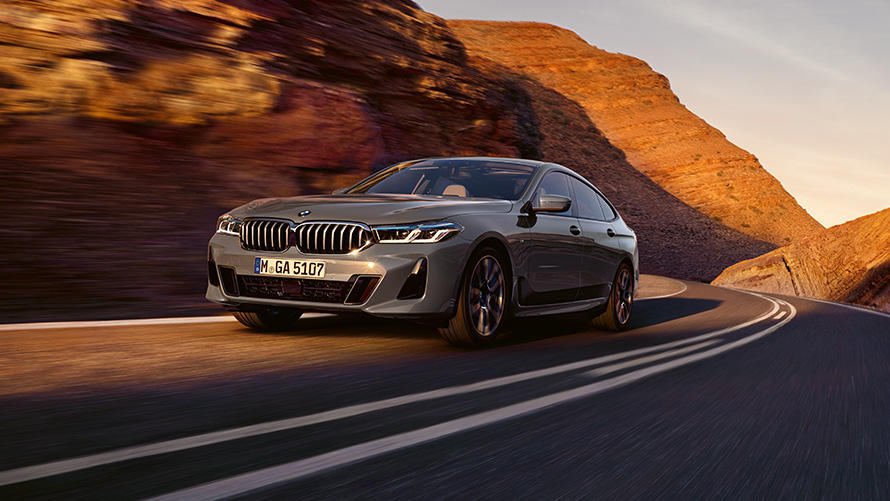
(BMW G32)
Ultimate travel comfort, supreme driving dynamics and luxurious space – the successor to the BMW 5 Series Gran Turismo has it all. The vehicle is launched during the 2017 International Motor Show (IAA) in Germany and is available at dealers in November of the same year.
The BMW 6 Series Gran Turismo is extremely agile thanks to its lightweight construction using aluminum and high-strength steels. With its efficient engines, highly-tuned suspension components and optional integral steering, BMW provides a sporty, decisive, and comfortable driving experience. Support comes from the standard rear axle air suspension and the optional adaptive suspension.
The flowing lines and the coupé-like roof profile promise sporty elegance, which is underlined by the long hood and recessed passenger compartment. The striking, powerful front and wide tail are indicative of the vehicle's confident appearance.
Inside, drivers and passengers will find a luxurious, spacious interior, with an optional panoramic glass roof and ceramic detailing on the controls. In 2020 the front and tail end were redesigned as part of a model update. Standard equipment now includes dynamic interior lighting, and an optional 4-zone automatic climate control system is available. The engines are even more efficient and, as an optional extra, Driving Assistant Professional offers crossing warnings and an emergency lane assistant.
Production period: 2017 – 2023
Engines: 2.0 – 3.0 liters (140 – 250 kW, 190 – 340 hp), 4- & 6-cylinder
Length/width/height: 5,091 mm/1,902 mm/1,538–1,540 mm
Fuel consumption and CO2 emissions.
-
The values of fuel consumptions, CO2 emissions and energy consumptions shown were determined according to the European Regulation (EC) 715/2007 in the version applicable at the time of type approval. The figures refer to a vehicle with basic configuration in Germany and the range shown considers optional equipment and the different size of wheels and tires available on the selected model.
The CO2 efficiency specifications are determined according to Directive 1999/94/EC and the European Regulation in its current version applicable. The values shown are based on the fuel consumption, CO2 values and energy consumptions according to the NEDC cycle for the classification.
For further information about the official fuel consumption and the specific CO2 emission of new passenger cars can be taken out of the „handbook of fuel consumption, the CO2 emission and power consumption of new passenger cars“, which is available at all selling points and at https://www.dat.de/angebote/verlagsprodukte/leitfaden-kraftstoffverbrauch.html.

